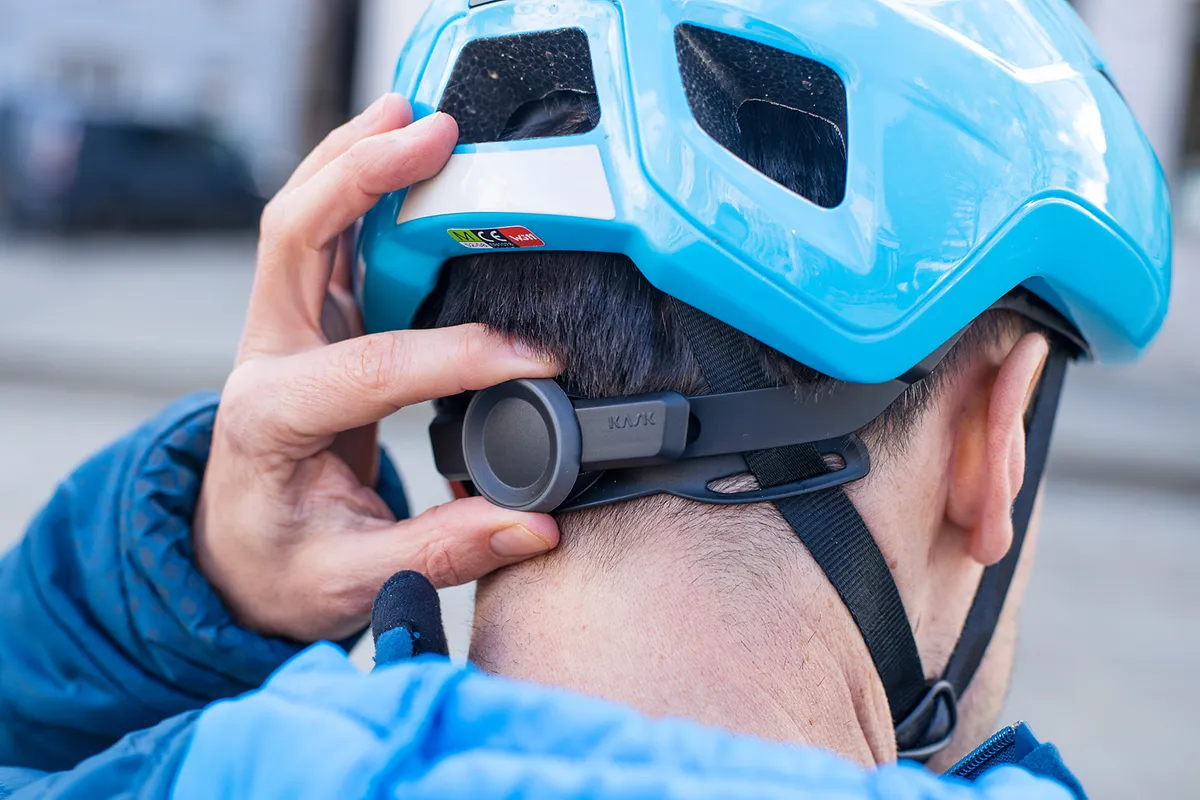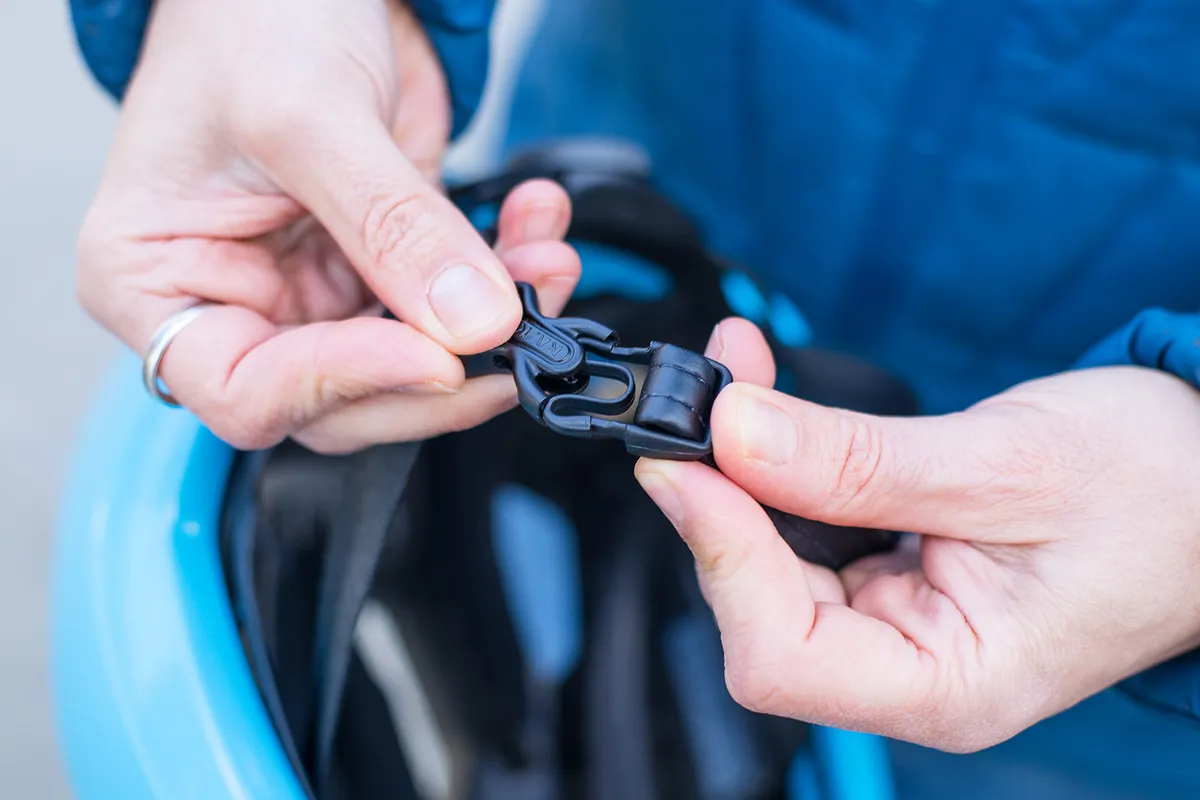Launched in late 2022, the new Kask Sintesi helmet is positioned as a kind of do-it-all helmet.
Kask says it’s ideal for riders who favour road, gravel riding and even urban commuting.
In testing, the Sintesi has offered solid performance, and has proven to be a competent – if not outstanding – bike helmet.
Kask Sintesi WG11 safety testing

The new multi-discipline Sintesi helmet comes with Kask’s WG11 rotational protocol stamp, the Italian brand’s alternative to MIPS.
WG11 is Kask’s own testing procedure, which sees the helmet tested at five different points – side, rear, front, front lateral and rear lateral – to deliver what the brand bills as “an invisible layer of protection that far exceeds international norms”.
Unlike MIPS, there isn’t an internal slip plane between the helmet and your head, which saves on weight and arguably results in a more comfortable wearing experience.
Kask states all its helmets have been independently tested by the Newton Lab in Milan.

However, I’ve yet to see any results from the influential (and commonly used) Virginia Tech Institute, so it’s hard to make a definitive judgement on the safety tech without those results.
Kask makes no aero claims about the Sintesi, so it’s likely you’ll need to look elsewhere if you’re intent on road-racing gains.
Kask Sintesi WG11 spec details

As always with Kask, there's style in abundance, with the Sintesi’s Light Blue colour one of 11 eye-catching options (I think both the Sahara and Red Wine versions also deserve consideration).
The synthetic leather chin strap, as seen in previous (and current) Kask helmets, continues to ooze class. It’s very comfortable too; I’m not sure why more brands don’t utilise this hassle-free and big-ride friendly option.
The covering of the exposed EPS foam with a polycarbonate outer shell around the rim and at the rear is exemplary and very tidily done.
It’s a finish I would expect of a helmet costing upwards of £100, rather than the £90 asking price here.
The antibacterial, anti-static Blue Tech padding, which has trickled down from Kask’s premium lids, also makes long-distance riding more comfortable.
Weight comes in at 227g for a medium, making this one of the lightest helmets at its (or any) price point.
This more or less equals Kask’s own highly regarded Protone road helmet (a helmet I’ve used more than any other) and Endura’s FS260-PRO.
It’s also 65g lighter than my current go-to, the Giro Agilis MIPS, and some 110g leaner than Specialized’s Echelon II MIPS on my scales.
While it’s worth noting MIPS tends to add 15 to 20g to a helmet, that can’t fully explain away the big differences here.
It’s something that’s noticeable on the roads, especially when you’re fatigued and facing the final climb of the day.
Equestrian-inspired retention

However, where the Sintesi underwhelms me somewhat is with its new patented retention system that, Kask says, stems from equestrian sports and provides greater stability when a rider lands following a fall.
Sadly, it feels slightly unconvincing, especially around the sides of the helmet.
The lack of a fixed-height adjustment feature means you have to re-align the helmet each time you put it on to find your required fit, rather than being able to leave that element in place.
The two-pronged buckle also feels a touch flimsy and imprecise when fastening (especially when wearing winter gloves).

That said, I appreciated the retention system’s sizeable dial, which makes it easy to locate and grip.
Interestingly, the Sintesi is available in only two sizes (Kask doesn’t offer a nominally size-small helmet).
Despite this, it says the Sintesi has the adjustability required to fit head sizes from 52 to 62cm.
Kask Sintesi helmet ride impressions

Kask targets the Sintesi for road, gravel and urban riding, and it performs adequately for all three cases.
If you want one helmet that could do the job of two or three other specialist helmets, the Sintesi is a strong contender.
Much of my testing has been in mild winter temperatures (up to around 13ºC), and the ventilation has been satisfactory thanks to the 13 sizeable channels.
Five of the ports are forward-facing, which certainly helped me avoid overheating on my steepest local climbs.
There’s no eyewear docking area in case you do get hot or simply want to tuck away your cycling glasses, but the reflective details on the rear (which would be obscured if any docking port was located there) are welcome to boost visibility in low light.
Kask Sintesi helmet bottom line

Overall, the Kask Sintesi is a solid and versatile helmet.
It’s well made and finished, but the retention system isn’t quite as secure-feeling as I might have hoped. It also lacks fixed-height adjustment, which is a niggle.
Although the equally chameleon-like (but higher-performing) Giro Agilis MIPS will continue to be my chosen helmet, the Kask Sintesi remains a decent enough helmet for multiple disciplines.
Product
| Brand | Kask |
| Price | A$145.00, €100.00, £90.00, $110.00 |
| Weight | 227g |
Features
| Helmet type | road |
| Features | Sizes: M (52-58cm), L (59-62cm) Colours: 11 colours, Light blue (tested) Protection System: WG11 |
